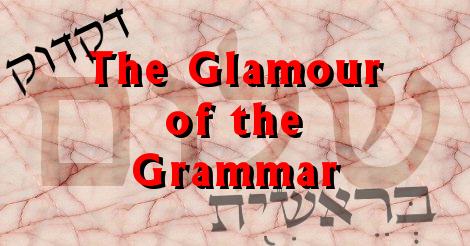Shalom.
That ancient Hebrew word, variously meaning “hello,” “good-bye,” and “peace,” seems a fitting way to inaugurate this column on the glamour of the grammar.
Related to shalem (“complete”), the greeting includes hopeful notes of tranquility and completeness. The root of the word, Sh.L.M, also gives us l’shalem, “to pay,” because you complete a (legal) transaction by paying for what you have taken; and l’hashlim, “to complete,” or, as high-school students know it, to make up missed work.
The official hourly Hebrew news broadcasts from the Voice of Israel begin shalom rav, that is, “great peace,” but also “hello!” (During the second Lebanese war, some broadcasters dropped the word rav in a subtle nod to the violence and to the national state of unease that it caused.)
A more traditional greeting is longer: shalom aleichem, that is, “peace be upon you.” It comes ready made with a built-in response: aleichem shalom, “upon you be peace,” or the slightly more formal va’aleichem hashalom, “and upon you be the peace.”
But when Israelis greet one another on the streets of Jerusalem or Tel Aviv, it is not shalom or a longer variation of it, but rather the colloquial ahalan that is most often heard.Read More »
